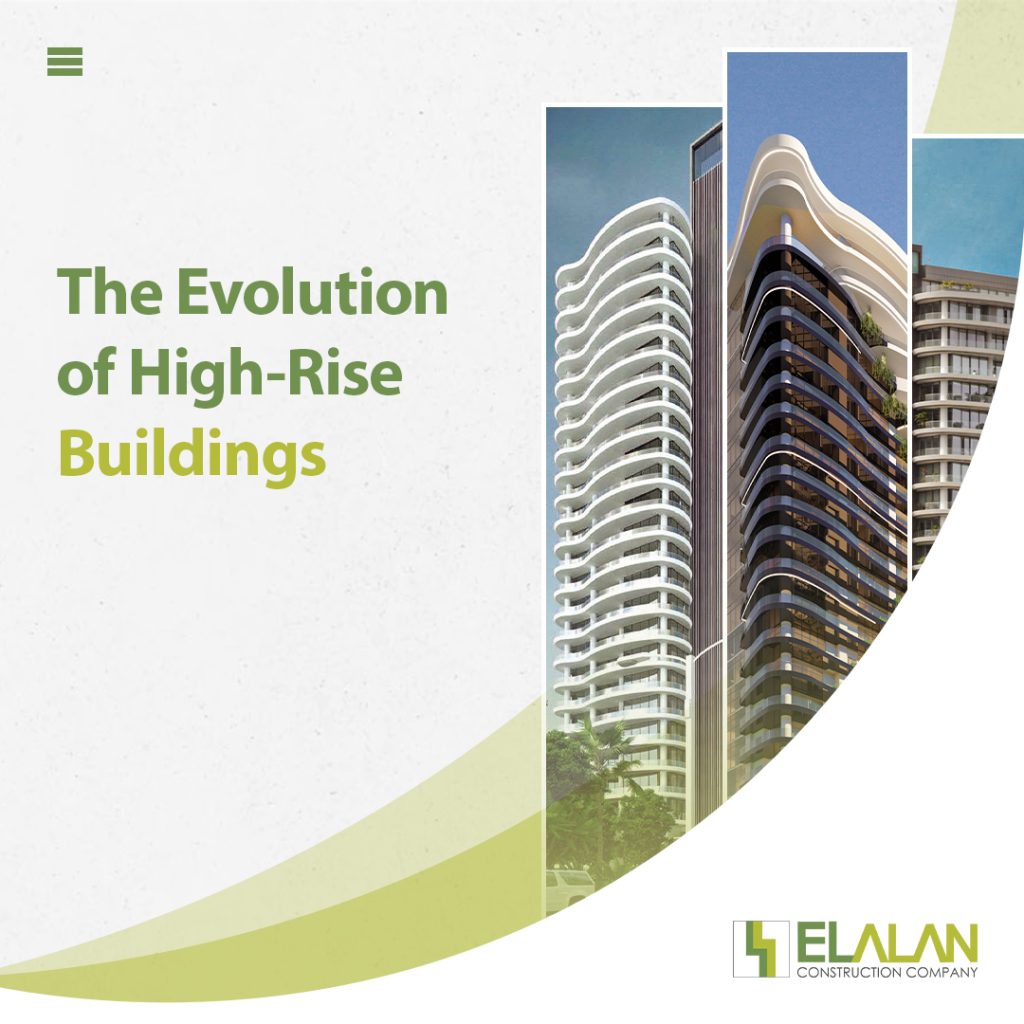The Evolution of High-Rise Buildings
Perhaps nothing has captivated humans more than the desire to build ever-higher structures throughout the history of architecture. The construction of ancient constructions such as the Tower of Babel, the Colossus of Rhodes, Egypt’s pyramids, Mexico’s Mayan temples, and India’s Kutub Minar, appears to have been motivated mainly by pride. Ego and competition, and even in recent times, these factors still play a role in determining the design and features of a building. Other realities that characterize social and economic factors, such as increased land values in urban areas and higher population density, have led to a massive increase in high-rise buildings worldwide.

What was once thought to be a uniquely American metropolitan phenomenon has spread to many small towns and even the countryside. Unique and unmissable tall buildings are constantly puncturing the skylines of the world’s cities as spectacular as mountain ranges. The challenge and aim of climbing upward continue to be the challenge and objective.With the rapid growth of urbanization in recent decades, the construction of high-rise and tall structures has surged around the world, particularly in emerging nations.
The shortage of land in highly populated areas of the world is a significant economic impetus for the rise of tall (primarily residential) buildings. The race to create the highest structure in a city, country, region, or even the world has fuelled the construction of tall buildings worldwide. In the last two decades, the competition to create the world’s tallest building has expanded to include the competition to build the most iconic and stunning high-rise buildings, generally characterized by complicated geometries and leaning-twisting forms.
While tall, slim structures pose a variety of design issues, the property’s developers must be able to find tenants ready to pay a premium for the unique views that a penthouse-style, ultra-tall and skinny skyscraper provides. The building’s slenderness is also influenced by its location and surroundings. Other technical considerations such as Wind engineering, is a critical component in the construction of tall, slender structures amongst others.
The early supertall buildings’ design and form were dictated by structural considerations, such as the John Hancock Centre in 1969, which had exposed structural steel as part of the design. This attests to the fact that architects and designers have more form freedom today than they have ever had before, consequently engineers can now assist their architect colleagues in creating buildings that would have been unthinkable just a few decades ago due to advancements in design and construction techniques.
In conclusion, the evolution of tall buildings reflects both technological advancements and the enduring human desire to push the limits of architectural possibility. From ancient monuments driven by pride and ambition to modern-day skyscrapers that blend innovation with aesthetic appeal, the quest to build higher continues unabated. As urbanization accelerates and land scarcity intensifies, the demand for iconic, tall structures will only grow. Architects and engineers, empowered by cutting-edge techniques, will undoubtedly rise to the challenge, shaping skylines with increasingly bold and imaginative designs that define the future of our cities.


Leave a Reply